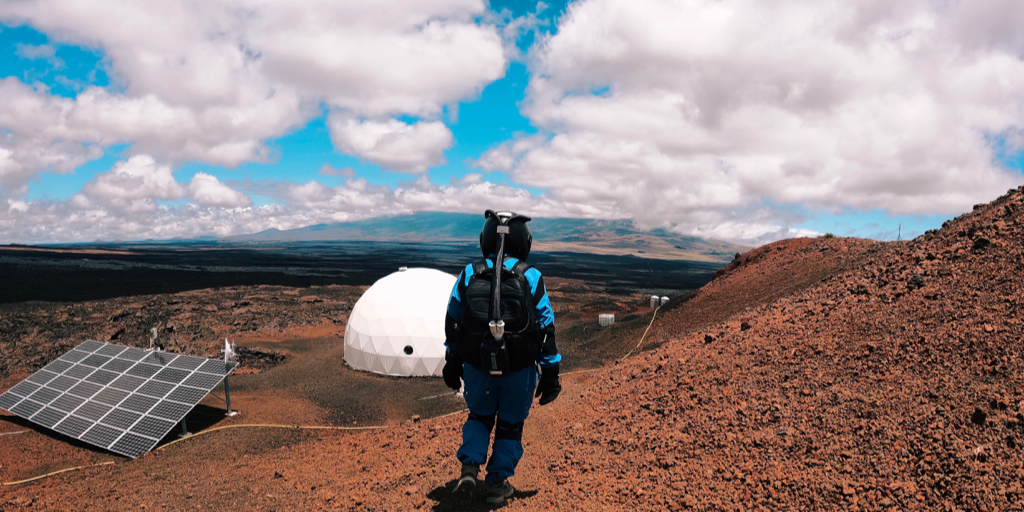While some people contemplate the human condition while sipping their morning coffee, or as they make their morning commute to work, Egyptian-American astrophysicist Sarafina El-Badry Nance, searches for the answers to the world’s existential questions by investigating the mysteries of the universe.
Having fallen in love with the stars at age five, today the accomplished astrophysicist is working towards a PhD in Astrophysics from the University of California, Berkeley. She is studying exploding stars, also known as supernovas, and using them to measure the rate of expansion of the universe.
Nance, who is best known for her research on red supergiant star Betelgeuse — part of the constellation Orion’s Belt and one of the stars that are visible to the naked eye — has been featured on Forbes’ 2021 list of inspirational women. She has also appeared on the Discovery Channel’s documentary series, ‘How the Universe Works’ (2010 – present), as an expert in her field. On the YouTube Channel, Constellations by Seeker — Seeker Media is a platform that produces content about science, technology, space and innovation — which gets 50 million monthly views, Nance breaks down complex notions about the universe for her audience.
The analogue astronaut was also chosen to be a part of the Hawai’i Space Exploration Analog and Simulation (HI-SEAS) programme in 2021. Operating under the International Moon Base Alliance (IMA), HI-SEAS is a simulation programme that mimics, as closely as possible, the conditions of going on a mission to Mars.

The astrophysicist has also been featured on the cover of Sports Illustrated’s Swimsuit Edition in 2022 following a preventative mastectomy she had undergone at age 26 after finding out, through a genetic test, that she had a higher chance of developing cancer. Since the mastectomy, the astrophysicist, who shared her health journey publicly to raise awareness, has been an ardent advocate of women’s health, championing the importance of genetic testing and regular check-ups.
Her memoir, Starstruck: A Memoir of Finding Light in the Dark, comes out in June 2023.
The Human Condition
The universe is actively expanding with its expansion rate accelerating over time. An indicator of this expansion is the space between galaxies and how that space is stretching. Nance adds that “between galaxy clusters, you start to see the space between those objects getting bigger and bigger with time. One of the ramifications of this expansion is the fate of the universe.”
While on a smaller scale, this expansion will not affect human beings on a day-to-day basis, on a larger scale, however, how the universe is behaving right now is tied into how it is made and how it will end.
In highschool, Nance found out — a fact that she explains changed her life — that humans understand only four to five percent of all matter in the universe. The other 95 percent is dark matter and dark energy. Dark matter is the matter that brings the universe together, but it is not directly measurable or seen. Dark matter acts like a force of attraction. Whereas it does interact with gravity, it doesn’t interact with light — it does not emit, reflect or absorb it.
Dark energy, on the other hand, is what is causing the acceleration of the universe. It is through supernovas — Nance’s chosen field of study for her PhD — that scientists discovered that dark energy existed.
For Nance, the human condition and our understanding of it is intrinsically tied to the stars, the galaxy, and space. Philosophy, art, music, literature, and other fields have at the centre of much of their work the exploration and definition of the human condition. It is no different within astronomy and astrophysics: the studies of the celestial bodies and the physics of space, respectively.

“One of the things that I think is so interesting about astronomy is that it poses these fundamental questions about existence, about where we are, how it began, and how it will end,” says Nance. “I think it’s such a human question. And, answering these fundamental questions allows us to form some sense of meaning around our existence.”
The term ‘overview effect’ is one used by astronauts to describe their experience of looking at the earth from space. It is a cognitive shift that happens, one with intense emotions.
Co-founder and president of the Human Space Program and author of ‘The Overview Effect: Space Exploration and Human Evolution’, Frank White, explains it as looking down at Earth against the backdrop of space, where the world’s fragility becomes clear to see. Astronauts return with a sense of renewed connection to humanity, and an appreciation for their planet, coupled with an urge to protect it.
“I think there is something really magical about realising our place in the universe,” Nance tells Egyptian Streets. “With science, there’s this really human connection and sense of purpose and meaning that I find in the night sky.”
Breaking into a Male Dominated-Field
The code of conduct of women has historically been entrenched in patriarchal societal norms. Women have had to fight throughout the years for their place in the public sphere. They are, however, still significantly underrepresented across several industries. In politics, women take up one in four seats in the parliament as per a report released by UN Women in 2020. Similar to politics, women in the field of astronomy and space sciences, represent less than 30 percent of researchers worldwide.
“There’s this stereotype that women aren’t good at maths and science,” shares Nance. “I also wasn’t good at maths and science until I worked really hard and had good teachers. For example, when I was a kid in maths class, my teacher would primarily call on the boys in the room telling them, ‘you are going to be engineers’ and he said the girls were not.”
The effects of these patriarchal systems set in place for decades are both implicit and explicit. In telling little girls they are not cut out for mathematics, or that astronomy is too hard for them, these comments, constantly repeated to women — either subliminally or overtly — insidiously seep into their own view of themselves.

Nance adds that within the field, there is “this sort of status quo, this institution, historically, of old white men. And young, driven, ambitious women are trying to overturn that, and enter a field where we’re not welcomed openly very often.”
The astrophysicist also says that the explicit messages that are systemically geared towards discouraging women from entering these types of fields come in many forms. They can look, for example, like a maths teacher normalising a little girl’s difficulty with maths and reducing it to the stereotype of girls just being naturally inept at the subject, which was the case for Nance.
“I think the painful thing is that we end up believing it. We internalise that messaging and construct these narratives about it that end up reiterating the message: ‘I’m not cut out for this, I am not a maths person.’”
She describes it as a cyclical effect that preys on a woman’s worst fears and beliefs about herself. Several studies have found that women are more risk-averse than men, and that it is linked to cultural and social influences.
“I think it’s impossible to have an honest conversation about this and not acknowledge the systematic or systemic ways that women have been straight up excluded from science, maths and engineering. I think there’s an institutional problem that really amplified these feelings,” Nance says.
When speaking of her own experience once she got to college, Nance explains that she “experienced this overwhelming sense of isolation and loneliness, feelings of not belonging. I was in these physics classes and I was the only woman — the only woman who looked like me. It really amplified the beliefs that I had about myself that I wasn’t smart enough to be here, that I wasn’t capable enough, that I shouldn’t be here.”
Finding Peace Amidst the Stars
In 2015, about 3.6 percent of the global population was found to suffer from some form of anxiety disorder. That number has increased by 25 percent since the COVID-19 pandemic, according to a report released by the World Health Organisation in 2022. While today the disorder has become prevalent with younger generations being vocal about it, back when Nance was growing up, it wasn’t recognised or spoken about as much in the media.
“I’ve had anxiety ever since I can remember being a functioning human being,” shares Nance. “It wasn’t called that when I was young. [At the time,] I didn’t have the language. I was young and I just knew that I had panic attacks and that I would get sick.”
While Nance has seen therapists for her anxiety, the stars and the skies are what help appease her condition to a degree.
“It gives me perspective,” she says. “And makes me feel like everything is going to be okay. It’s that we’re really small in the cosmic sense of things, and that perspective is enchanting.”







Comments (2)
[…] write a book that inspires anyone, anywhere. Plan B would be to win the lottery and live on a yacht.[…] From Love to Work and Play: Daily Life in…© 2019 Egyptian Streets. All Rights Reserved.Subscribe to the fastest growing newsletter in […]
[…] post The Egyptian Astrophysicist Shattering the Glass Ceiling to Observe the Stars first appeared on Egyptian […]